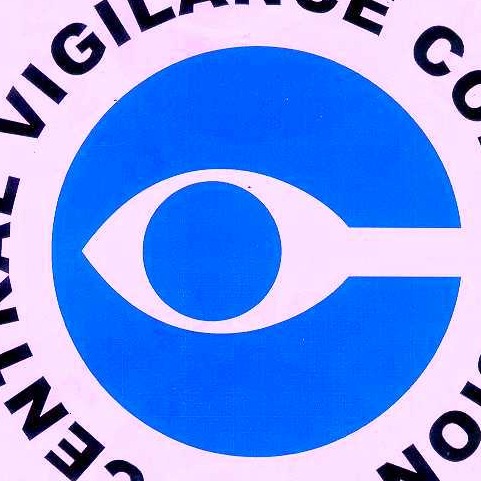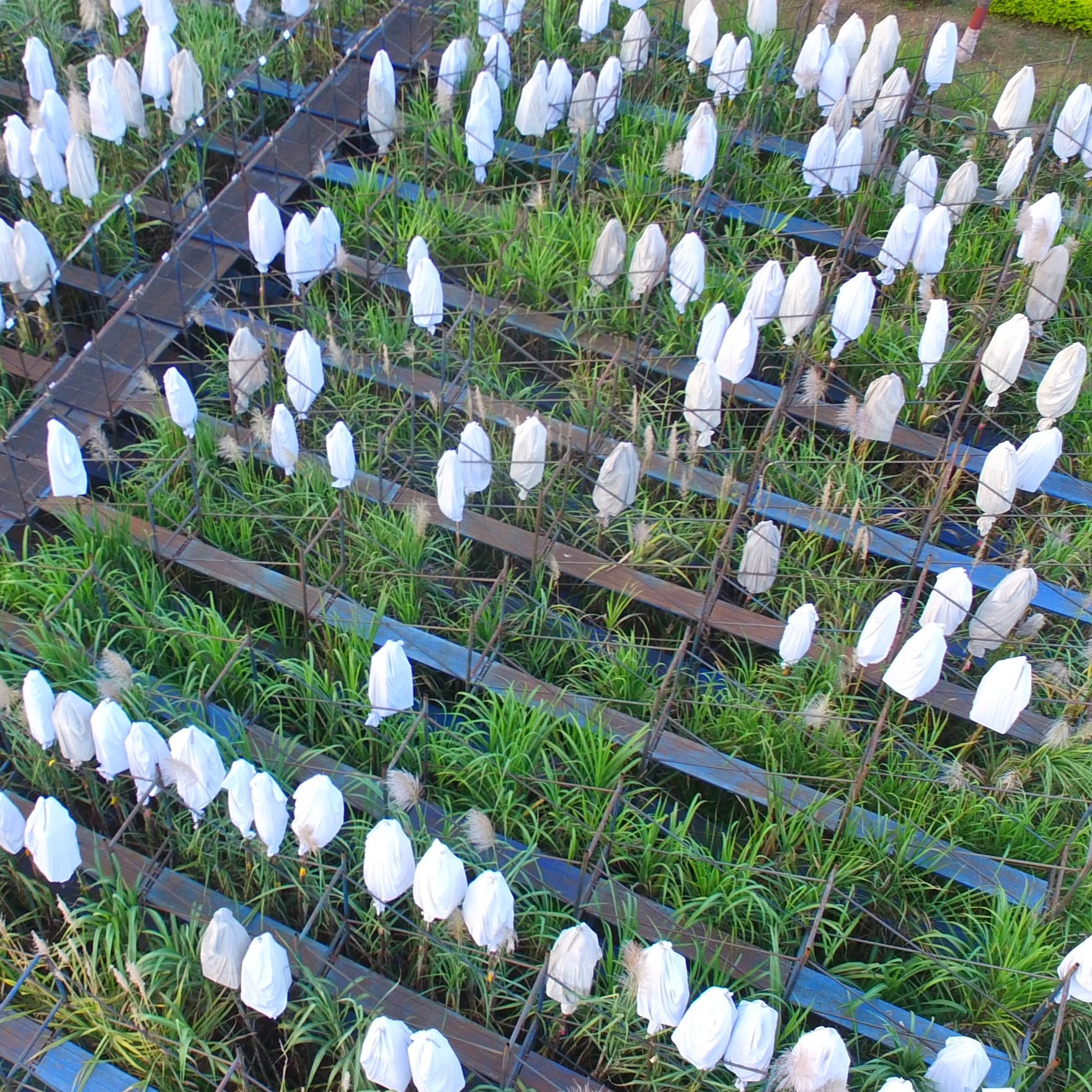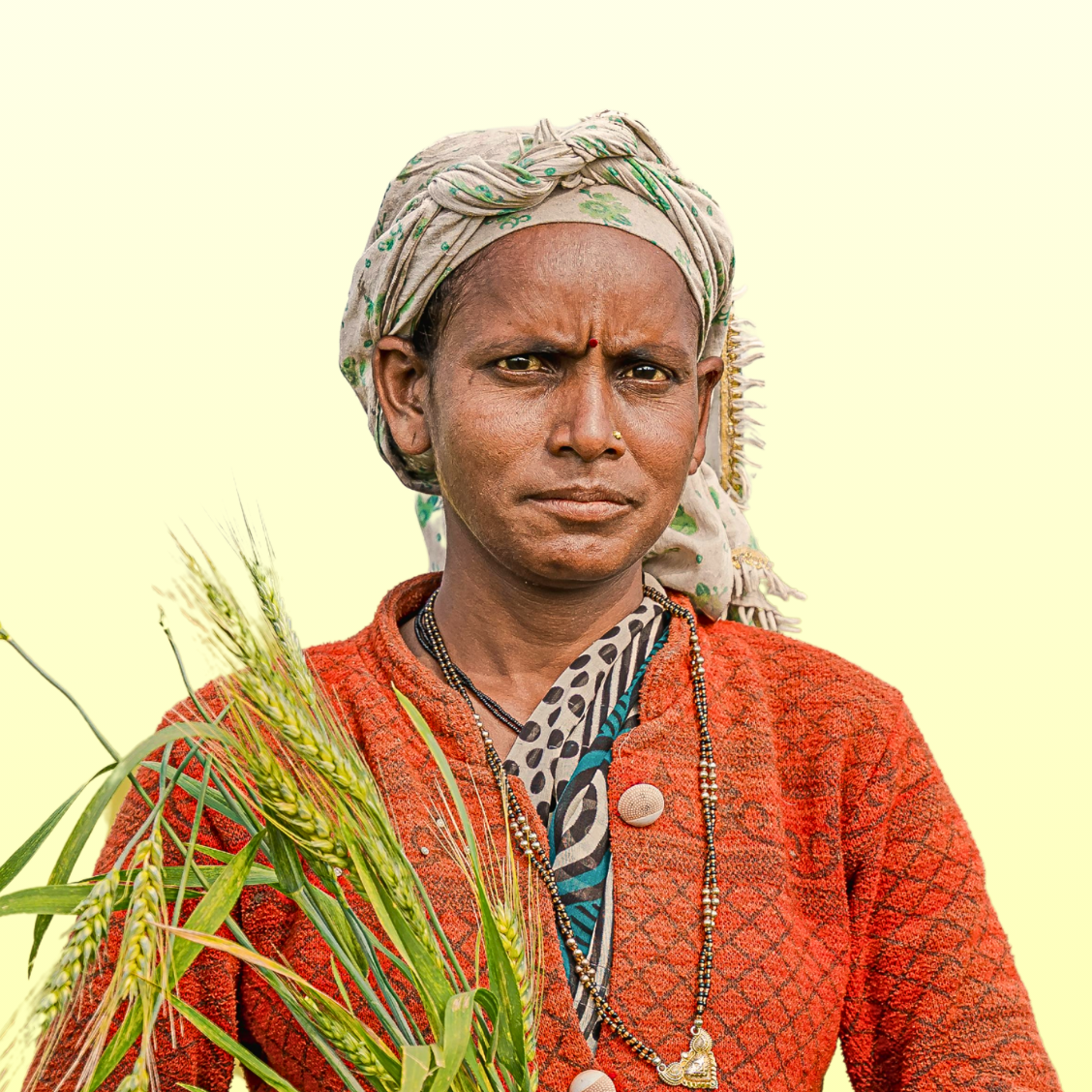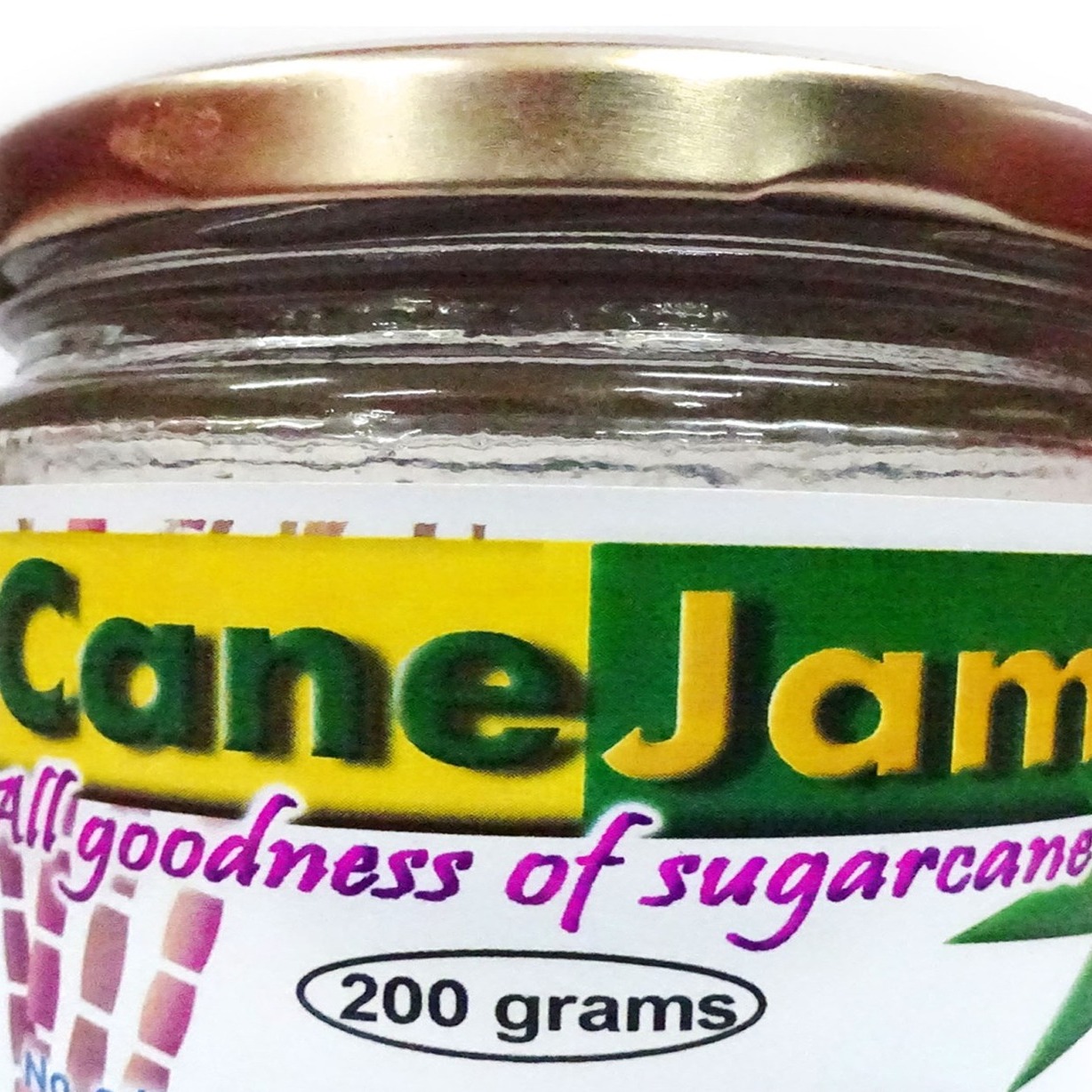Divisions
Crop Improvement - Division
About Crop Improvement
The Crop Improvement Division of the ICAR–Sugarcane Breeding Institute has played a pivotal role in the advancement of sugarcane agriculture in India through the continuous development of improved varieties and cutting-edge technologies. The division focuses mainly on enhancing productivity, quality, and resilience of sugarcane to meet the evolving needs of the sugar industry and farming community. It comprises three key sections—Breeding, Biotechnology & Bioinformatics, and Genetics & Cytogenetics—each contributing to different aspects of crop improvement.
The division houses a team of dedicated scientists specializing in diverse fields such as pre-breeding, varietal development, genetics, molecular cytogenetics, molecular breeding, genomics, cataloguing of world sugarcane germplasm, molecular markers and genome editing in sugarcane. The division continues to develop superior sugarcane varieties and innovative technologies contributing significantly to sustainable sugarcane production and the overall growth of the sugar sector in India through integrated conventional and molecular approaches.
Key Achievements
Crop Production - Division
About Crop Production
The Crop Production Division of the ICAR–Sugarcane Breeding Institute focuses on developing sustainable, resource-efficient, and climate-resilient production systems for sugarcane. The division comprises three specialized sections — Agronomy, Soil Science, and Crop Physiology — supported by scientists with expertise in agronomy, soil science, microbiology, farm machinery, and biochemistry.
The division’s research programmes aim to:
- Develop improved cropping systems and agronomic practices to enhance sugarcane productivity and profitability.
- Promote end-to-end farm mechanization for efficient field operations, reduced drudgery, and cost-effective cultivation.
- Enhance the physiological efficiency and stress resilience of sugarcane through integrated agronomic and physiological interventions.
- Strengthen natural resource management, including soil health, water use efficiency, and carbon sequestration for long-term sustainability.
- Develop value-added products from sugarcane and its by-products to support a circular and low-carbon bioeconomy.
Through integrated and multidisciplinary approaches, the division contributes significantly to advancing climate-smart, profitable, and sustainable sugarcane production systems aligned with national priorities in agriculture and environmental stewardship.
Key Achievements
The Crop Production Division has made significant contributions to enhancing the productivity, sustainability, and resilience of sugarcane production systems through innovations in agronomy, soil science, crop physiology, and farm mechanization. Major achievements include:
- Cropping Systems and Resource-use Efficiency
- Developed resource-use-efficient intercropping systems and drip fertigation schedules to enhance nutrient and water-use efficiency.
- Introduced Settling Transplanting Technology for sustainable establishment and productivity of sugarcane.
- Formulated and validated resource-use efficient practices—namely in-situ trash management in plant cane, green cane trash blanketing in ratoon crop, and use of composted coir pith—to promote sustainable water and residue management in sugarcane production systems.
- Farm Mechanization and Equipment Development
- Developed and commercialized several farm machinery and tools including Sugarcane Cutter Planter, Settling Planter, Rind Remover-cum-Detrasher, Bud Chipper, Tractor-operated EPN Applicator, and Soil Moisture Indicators for field-level precision and efficiency.
- Integrated Crop and Soil Management
- Standardized Integrated Nutrient and Weed Management practices suited to diverse agro-ecologies.
- Established agro-techniques for tissue culture plantlets and bud chip settlings for rapid multiplication and field establishment.
- Developed decision support tools such as SoSmart (Soil Smart Sugarcane Management System) and DS4M (Decision Support System for Sustainable Sugarcane Soil Management) to enable site-specific nutrient and irrigation management.
- Nutrient management for calcareous soil
- Value-added and Novel Sugarcane Products
- Developed technologies for freeze-dried sugarcane juice, cane jam, cane dietary fibre-based food products, liquid jaggery without chemical additives, and frozen sugarcane juice products such as kulfi, softy ice cream, and sugarcane wine, expanding the scope of sugarcane utilization beyond traditional products.
- Nutrient, Stress, and Root Physiology
- Developed an efficient and economical nutripriming technique for single bud setts to enhance early vigor.
- Advanced phenotyping approaches to characterize root system traits in sugarcane.
- Defined critical deficiency, threshold, and sufficiency levels for major nutrients (N, P, K) under controlled conditions.
- Demonstrated strategies for drought stress alleviation in tropical sugarcane.
- Climate Resilience and Physiological Research
- Developed a Heat Tolerance Index (HTI) as a screening tool for thermotolerance, and identified physio-biochemical markers for oxidative stress tolerance in sugarcane for the first time.
- Elucidated the transcriptomic and proteomic landscape of sugarcane under heat stress.
- Conducted comparative physiological studies between tropical and subtropical sugarcane varieties to identify resilience traits.
- Established aquaponic-based screening techniques for evaluating drought and salinity tolerance in sugarcane genotypes.
Crop Protection - Division
About Crop Protection
Nematology
The Scientist in Nematology section engaged in conducting basic, applied and strategic research on various aspects of sugarcane phytonematodes and entomopathogenic nematodes. The major area of research includes:
- Bio-intensive integrated and sustainable plant parasitic nematode management of sugarcane
- Exploitation of entomopathogenic nematode-symbiotic bacteria complexes for white grub control in sugarcane ecosystem
- Exploration of novel insecticidal toxins and antimicrobial compounds from symbiotic bacteria Photorhabdus / Xenorhabdus
Major sugarcane growing belts of India have been surveyed for Plant parasitic nematodes (PPN). In total, 48 species belong to 23 genera have been recorded from sugarcane ecosystem. Lesion nematode, Pratylenchus sp. has been identified as the most widespread and important nematode pest of sugarcane in almost all zones excepting in sandy coastal zones, followed by species of Hoplolaimus, Meloidogyne, Tylenchorhynchus and Helicotylenchus. Detailed investigations on the taxonomy, biology, pathogenicity, population dynamics and management of most predominant nematodes have been pursued giving rise to the following salient findings. (i) average annual crop losses caused by nematodes were estimated to be 16.5%. (ii) chlorosis, stunting and wilting and consequent decline in yield and quality of sugarcane are the common symptoms associated with high nematode population in soil in many zones (especially where sugarcane is grown in monoculture). (iii) species of Pratylenchus and Hoplolaimus have been found responsible for inducing sugarcane wilt caused by Fusarium spp. and Cephalosporium spp. in many wilt sick areas. (iv) five species of Pratylenchus, viz. P. brachyurus, P. coffeae, P. pratensis, P. delletrei and P. zeae were identified from sugarcane fields, of which P. zeae is most predominant. (v) population dynamic studies have indicated that period between July-Sept and a depth of 0-20 cm from the base of the clump as optimum time and space respectively for the sampling of P. zeae. 25-30°C temperature and clay to loamy soils were found to be the optimum temperature and soil type for rapid multiplication of Pratylenchus spp.(VI) Biochemical changes in sugarcane roots with respect to protein, amino acids, sugars, pigments, and enzymes in response to lesion and root knot nematode infection have been characterized. One nematode/gram of soil has been found as ETL for Pratylenchus on sugarcane.
Integrated nematode management (INM) strategies involving two or more of following methods have been developed. Application of carbofuran @ 3 kg a.i./ha in two splits i.e. at the time of planting and 90 days after planting was found effective and economical in reducing nematode population in heavily infected areas for immediate results. Applications of cured pressmud @ 25 t/ha before planting reduces nematode population and improves yield and quality of sugarcane. Intercropping or green manuring with sunnhemp, a trap crop checks nematode multiplication. Deep summer ploughing and keeping field weed free reduces the nematode damage. Application of organic amendments like neem, caster and groundnut oil cakes and Neemark also reduces nematode damage. Cultivation of nematode resistant varieties is the best in checking nematode population build up. Resistant varieties for lesion nematode, Pratylenchus zeae. were identified. A rapid screening technique has been standardized for screening sugarcane germplasm against nematodes.
Entomopathogenic nematodes (EPN) from white grub Holotrichia serrata endemic areas were isolated, screened its efficacy against white grub, potential EPN were identified under pot culture, microplot and field conditions. Heterorhabditis indica and Steinernema glaseri are effective against 1st, 2nd and 3rd instar of white grub Holotrichia serrata and caused more than 70% suppression of white grubs @ 2.5billion nematodes/ha.
Facilities available in the Section:
- Faculty recognized for Ph.D. guidance in Zoology / Bio-sciences / Biotechnology by Bharathiyar University, Coimbatore and Anna Technological University, Coimbatore,
- Research microscopes with image analysis system, Ultra centrifuge and incubator shaker
Key Achievements
Plant Pathology
Achievement of Plant Pathology from 2000-2025
- Multiplex RT-PCR technique was standardized for the detection and diagnosis of individual sugarcane viruses in a mixed reaction of 3 different viruses (SCMV, SCSMV, SCYLV).
- Complete genome (~ 5875 bp) of four SCYLV isolates from infected leaves of Co 86032, CoC 85061, CoV 92102 and B38192 was sequenced and characterized.
- Many sugarcane clones meant for breeding purpose have been tested under CCT for red rot resistance and many PZVT clones were also tested for red rot resistance under field conditions.
- Phenotypical grouping of Sporisorium scitamineum isolates representing different geographical locations based on virulence index was established based on differential interaction studies. Polymorphism among the isolates with SSR and ISSR markers indicated grouping of isolates based on geographical regions.
- Sett treatment devise for mechanized treatment of sugarcane setts was developed for disease management and also production of disease-free healthy nursery
- A methodology has been standardized for synthesis of chitosan nano particles by ion gelation technique. Nano formulations of Benzothiadiazole (BTH) and salicylic acid (SA) was found effective in inducing the host resistance of sugarcane crop against red rot, smut and wilt diseases.
- In the area of molecular virology, virus suppressor proteins in RNA viruses infecting sugarcane P0 gene of SCYLV, P1 and HC-Pro genes of SCSMV were characterized. silencing assays of these suppressor genes proved that both genes have the RNA silencing suppressor activity.
- Endophytic bacteria were identified for red rot and smut management and growth promotion.
- The GC/MS, FT-IR and NMR analyses of pure fraction of Colletotrichum falcatum toxin and its structural elucidation identified the compound as 1,2-Benzenedicarboxylic acid, bis (2-ethylhexyl) ester, thus confirming its role in pathogenesis.
- First time standardized the protein extraction method for protein of sugarcane stalk in the world.
- Suppression subtractive hybridization (SSH) analysis resulted in identification and characterization of genes related to pathogenicity in C. falcatum. Similarly, proteome profiling of C. falcatum representing distinct virulence pathotypes led to identification of proteins related to pathogenicity viz. peptidyl prolyl cis/trans isomerase, fungal specific transcription factor, etc.
- A new SCGS phytoplasma sub group has been identified through in silico RFLP using iphyclassifier
- RT LAMP assay has been developed for SCMV and SCSMV and its sensitivity with the conventional RT PCR and qRT-PCR has been standardized for the mosaic disease diagnosis.
- Novel miRNAs viz RC-709, R6-827, R241288, SC 960, S6-682, and S24-456 involved in sugarcane and C. falcatum interaction were identified. A critical analysis of the role of sugarcane miRNAs during compatible and incompatible interactions by adopting NGS platform revealed the role of sugarcane miRNAs and their target genes during sugarcane C. falcatum interactions and provided new insight into the miRNA mediated defense mechanism in sugarcane.
- Azole fungicides as inhibitor of Cytochorome P450 gene in C. falcatum has been proved under invitro and invivo conditions.
- Nanoparticle enhanced lateral flow immunoassay (LFA) methodologies were standardized for rapid on-site detection of sugarcane streak mosaic virus (SCSMV) associated with mosaic in sugarcane. The sensitivity of this assay was also validated along with other diagnostic methods like qRT-PCR and ELISA.
- A visual calorimetric RT-LAMP: assays were standardized for the diagnosis of SCYLV, SCMV and SCSMV in sugarcane.
- The presence of rust resistant gene Bru1 in sugarcane parental clones maintained at ICAR-SBI, was studied using the marker R12H16 and 9020-F4-PCR-Rsa1,
- CfPDIP1, a novel secreted protein of Colletotrichum falcatum, that elicits defence responses in sugarcane and triggers hypersensitive response in tobacco was identified.
- In the molecular elucidation of biotic elicitor mediated defence responsive genes/proteins, a low molecular weight (LMW) protein fraction of around 10-30 kDa was identified to possess the ability to induce defence in sugarcane.
- Whole genome (48.2 mb) and transcriptome (27 mb) of C. falcatum were generated using next generation sequencing (NGS) technology.
- PCR based diagnostic technique was standardised for the GSD and SCBV and Tissue blot immune assay was standardised for RSD.
- ELISA technique standardised for RSD, SCBV and SCYLV.
- Evaporative binding immunosorbent assay was standardised to detect RSD.
- Dot blot technique for detection of leaf scald disease was standardised.
- Though proteomic analysis of a compatible interaction between sugarcane and S. scitamineum identified 53 sugarcane proteins identified were related to defence, stress, metabolism, protein folding, energy, and cell division; in addition, a putative effector of S. scitamineum, chorismate mutase, was identified.
Nematology
Plant Parasitic Nematodes: Bio-intensive Integrated Control
- In field, bioagents Paecilomyces lilacinus Pochonia chlamydosporia and Pseudomonas flourescens in combination with INM practice showed reduction in nematode population and increase the yield of sugarcane.
- Integrated Nematode Management in combination with biofertilizers (Azospirillum and Phosphobacteria) was evaluated in field condition against sugarcane phytonematodes.
- Combined application of Arbuscular mycorrhizal fungi viz., Glomus mosseae and fasciculatum along with three nematode bioagents viz., Arthrobotrys oligospora, Paecilomyces lilacinus and Pochonia chlamydosporia on sugarcane cv. Co.86032 was evaluated against lesion nematode Pratylenchus zeae and root knot nematode Meloidogyne javanica. Synergistic effect was noticed with AMF and other bioagents in controlling the nematode population.
- A Bio intensive Integrated Nematode Management (INM) package based on eco-friendly components was developed involving green-manuring with legumes like sunhemp or daincha before planting; application of organic amendments such as of cured pressmud/Farm Yard Manure (FYM) @ 25 t/ha or neem/castor oil cake @ 2t/ha during field preparation or mulching with cane trash @ 5t/ha and its incorporation into soil during earthing-up operation; intercropping with short duration legumes like soybean and green gram; application of biocontrol agents like Paecilomyces lilacinus or Verticillium chlamydosporium or Trichoderma viride or Pseudomonas fluorescens @ 20 kg/ha at the time of planting and application of nematicides like carbofuran or phorate @ 3kg a.i./ha at two slits i.e. half the dose at the time of planting and the second half 90 days after planting and it should be followed up with application of organic amendments or green manuring in the next season to sustain the nematode control achieved using nematicides.
Entomopathogenic Nematodes (EPN) : Isolation, morphological, molecular characterization of EPN and Genbank submission
- Entomopathogenic nematodes (EPN) belongs to Heterorhabditis and Steinernema have been isolated from tropical and subtropical sugarcane ecosystem.
- Seventy four EPN isolates belongs to Tropical (45) and subtropical (29) isolates were maintained by regular culturing in Galleria mellonella larvae and are being maintained in the culture collection.
- Morphological and molecular characterization of species / isolates of Heterorhabditis and Steinernema was done using RAPD-PCR, Protein markers and sequencing of rDNA ITS1, ITS2 and 5.8S rDNA.
- Fifty EPN isolates were molecularly characterized by analysis of genomic DNA sequences. Primers used in the Polymerase Chain Reaction (PCR) were specific for the internal transcribed spacer (ITS) region of the nuclear ribosomal genes. Amplifications were carried out in a thermo cycler. Clear bands of 700-1022 bp appeared for Steinernema and Heterorhabditis. PCR products were sequenced and The sequences were compared with NCBI database. The following major EPN identified from sugarcane ecosystem; Heterorhabditis indica, H. bacteriophora, Steinernema siyamkayi, S. glaseri, S. thermophilum, S. abbasi, S. carpocapsae and S. surkhetense
- ITS sequences of 50 EPN (Heterorhabditis and Steinernema) isolated from tropical and sub tropical sugarcane ecosystem have been submitted to NCBI Database with the following accession numbers JQ277458- JQ277462 (5), KF937806- KF937821 (16), MF919610- MF919622 (13), MF939567- MF939578 (12), MG780213- MG780216 (4)
Entomopathogenic Nematodes: Exploitation of entomopathogenic nematodes for sugarcane pest control
- Genetic variability in environmental stress tolerance traits (heat, desiccation, and hypoxia) and fitness traits (virulence and reproductive potential) among isolates of entomopathogenic nematodes were studied.
- Entomopathogenic nematode isolates possessing relatively higher potential and virulent against sugarcane internode borer Chilo sacchariphagus indicus, and shoot borer Chilo infuscatellus were identified. Field application technology of EPN with suitable antidesiccants materials and UV protectants were identified and standardised for foliar application of EPN in the foliar system to overcome desiccation of EPN and to improve its efficacy against foliar pests in the field.
- Compatibility studies of entomopathogenic nematodes with entomopathogenic fungi Beauveria bassiana and brongnartii were studied in sugarcane internode borer C. sacchariphagus indicus and shoot borer C. infuscatellus
- Synergistic effect of insecticide Imidacloprid and EPN Heterorhabditis indica (isolates DSM78 and BNR) and bacteriophora (Hb) noticed with 100% mortality 1st instar white grub H. serrata and 44 to 100 % mortality of 3rd instar grubs than individual inoculations of either EPN or Imidacloprid.
- Combined application of Imidacloprid and EPN indica (BNR isolate), H. indica (DSM78) and S. siyamkayai (karnal) recorded 33.4 to 100% mortality of 3rd instar white grub H. serrata under pot culture and 60 to 75% mortality under microplot conditions.
- Field trials were conducted to evaluate the efficacy of EPN Heterorhabditis indica against white grub serrata. In all the trials, reduction in number of grubs observed in the EPN treated plots as compared to the control plot. The reduction of grub population due to EPN treatment was 43 to 77 per cent at Bannariamman Sugar Mill, Thalavady, 30 to 78 per cent at Dharmapuri Sugar Mill, Palacode, 28.5 to 85.5 per cent at Coromandel sugars, Karnataka and 87.5 per cent at Rajshree Sugars Ltd, Theni.
Entomopathogenic Nematodes: Mass production and Formulation
- In vivo and In vitro mass production techniques have been standardized for H. indica, bacteriophora, Steinernema carpocapsae, S. glaseri andS. siyamkayi
- Mass production of EPN was attempted by Monoxenic liquid culture method. Nine different media composition were tried with or without carbon and lipid source. Successful multiplication of EPN observed in liquid media and the yield of EPN was 8700IJs/ml of media which was 43 fold. The in vitro produced IJs were bioassayed against Galleria mellonella
- A novel EPN Talc powder formulation with a higher shelf life of more than one year of glaseri and ten months of H. indica was developed
DEVELOPMENT OF EPN TECHNOLOGY FOR COMMERCIALIZATION
- The ICAR-SBI EPN Biopesticide formulation technology has been commercialized and Licensed to sixteen biopesticide companies.
DESCRIPTION OF ICAR- SBI EPN BIOPESTICIDE FORMULATION TECHNOLOGY
Research efforts have been made at ICAR-Sugarcane Breeding Institute, Coimbatore in utilization of EPN against white grubs. Extensive survey was conducted in white grub endemic areas of sugarcane for isolation of EPN; bioefficacy of EPN was evaluated against different instars of white grubs and potential EPN was identified under laboratory, pot culture, microplot and field conditions.
EPN mass production on larvae of greater wax moth Galleria mellonella has been standardized with economically cheaper available substrates on commercial level.
A novel ICAR-SBI entomopathogenic nematodes (EPN) biopesticide formulation was developed first of its kind in a unique combination of carrier materials with talc powder to attain a longer shelf life with viable infective nematode juveniles (IJs) of EPN by providing adequate aeration and moisture. The formulation containing Heterorhabditis indica strain SBITND78 has a shelf life of 6-7 months with 90% survival of nematodes and the formulation containing Steinernema glaseri strain SBILN1 has a shelf life of 9-12 months with 90% survival of nematodes. Successful control of white grub under field conditions obtained with ICAR-SBI EPN biopesticide formulation.
ADVANTAGES OF ICAR-SBI EPN FORMULATION TECHNOLOGY AND COMMERCIAL POTENTIAL
ICAR-SBI EPN biopesticide formulation is non toxic, environmental friendly and ecologically safe to human beings and beneficial organisms. They kill only target insect pests and safe to environment.
- Infective juveniles are tolerant to most agrochemicals including herbicides, fungicides and insecticides.
- EPN mass production is standardized by in vivo method on Galleria larvae. The artificial diet developed to enhance the biomass production of Galleria larvae is cheaper and cost effective for virulent EPN production.
- EPN technology can be commercially scaled up to larger scale as per the requirements
- Successful control of white grub under field conditions obtained with ICAR-SBI EPN biopesticide formulation
- No special costly equipments and materials are needed for the EPN production and Formulation and are Farmer friendly.
- No special containers needed to store the formulation as locally available aluminum lined high density polyethylene sachets are sufficient
- Formulation is easy to transport, safety during storage and application
- Can be easily applied in the field with conventional equipments by broadcast, spot application, spraying with normal sprayers and water based application methods.
FIELD APPLICATION OF EPN
- Recommended dose of EPN : 1 x 108 IJs/acre (2-3 kg powder formulation/acre)
- EPN should be applied at first beetle emergence during onset of summer shower (April – June)
- Irrigate the field prior and after EPN application and keeping the treated area wet for at least 5days post application
- The ideal time of application is at evening hours so EPN can become active at night without risk of sunlight damage
- Give more concentrated application in the border rows extending to five to seven meters inside (white grub infestation generally seen on the boundaries of the plots and extending to a few meters inside).
- Mix the EPN formulation with water (150g EPN formulation/ sprayer tank) and can be applied using knapsack sprayer (nozzle and inside filters of the spray equipments should be removed to prevent them from becoming clogged with nematodes) in each sugarcane clump /any crop by making a 15-20cm pit using a crowbar (sugarcane/maize) or
- Thoroughly Mix the EPN powder formulation with 100kg soil or FYM and broadcast in the field
FIELD EVALUATION OF EPN
Five different field trials were conducted to evaluate the efficacy of EPN against white grub H. serrata. In all the trials, reduction in number of grubs was observed in the EPN treated plots as compared to the control plot. The reduction of grub population due to EPN treatment is presented in Table 1 .
Table. Field evaluation EPN against white grub Holotrichia serrata on sugarcane
|
Location |
% reduction of grubs |
|
Field trial I. Ramapuram village, Thalavadi, Erode Dt. Tamilnadu |
77.0 |
|
Field trial II. Bannaenahalli, Anumanthapuram, Dharmapuri Dt. Tamilnadu |
78.0 |
|
Field trial III. Vadakahalli Village K. R. Pet, Karnataka |
80.0 |
|
Field trial IV. B. Anaikarapatti, Bodinayakanur Theni Dt. Tamilnadu |
87.5 |
|
Field trial V. Banagahalli village, Thalavadi, Erode Dt. Tamilnadu |
79.0 |
Exploration and exploitation of novel insecticidal toxins and antimicrobial compounds from symbiotic bacteria Photorhabdus / Xenorhabdus associated with entomopathogenic nematodes
- Insecticidal and fungicidal activity of bacterial symbiants, Photorhabdus and Xenorhabdus associated with EPN were explored which paved a new direction to exploit these symbiotic bacteria for insect pests control and pathogenic fungi management
Isolation of symbiotic bacteria, biochemical and molecular characterization and Genbank submission
- Symbiotic bacteria Photorhabdus and Xenorhabdus were isolated from Galleria mellonellainfested with EPN.
- Totally 45 symbiotic bacteria belongs to Photorhabdus (26 Nos.) and Xenorhabdus spp. (19 Nos.) are being regularly sub cultured on NBTA media and stored in glycerine.
- Biochemical and Molecular characterization of bacterial isolates was done by amplification of the 16S rDNA gene and the 16S rDNA sequences were compared with the database from the sequence gene bank at the National Centre for Biotechnology Information (NCBI). All the bacterial cultures are being maintained in the culture collection of ICAR-SBI, Coimbatore.
- Twenty two 16S rDNA sequences of Photorhabdus (13) and Xenorhabdus (9) have been submitted to NCBI Genbank Database with accession numbers MF872619- MF8726137 (19), MF950906- MF950908 (3)
Testing insecticidal activity of Xenorhabdus against white grub Holotrichia serrata and greater wax moth larvae Galleria mellonella
- The bacterial cell and cell free culture filtrates of Xenorhabdus and Photorhabdus spp. were tested for its insecticidal activity against first instar white grub Holotrichia serrata and full grown larvae of mellonella. All the bacterial isolates were known to have insecticidal properties and caused mortality of the Galleria and white grub.
Purification of toxic metabolites of Xenorhabdus stockiae
- Purification of insecticidal metabolites from luminescens sub sp. laumondii (SBIPLKCSM26) was done and totally eight fractions were obtained. Eight purified fractions were tested against 1st instar white grub larvae. All the fractions caused mortality of white grub and it was ranged between 8 to 75%. Fraction 8 caused 75% mortality of the larvae followed by fraction 6& 7 which caused 58.3% mortality of grubs.
Statistics and Economics
About Statistics and Economics
Key Achievements
Year | Achievements/ Contributions/ Scientific events undertaken |
1972-73 | First (Junior) statistician S. Shanmugasundaram, MSc was appointed at the ICAR-SBI institute. Statistics section was created. |
1974 | Project on uniformity trails in sugarcane crop using variety Co 419 in collaboration with Institute of Agricultural Research Statistics (Now IASRI). |
1975 | · ‘Plant population studies in sugarcane’ project report has indicated that 34-35 setts are optimum for planting in a 20’ row length. · ‘Uniformity trails in sugarcane’ project highlighted that CV decreases with increasing plot size either in length or in breadth. |
1976 | ‘Uniformity trail’ studies found that a plot size of one row 11 m long or 2 rows, 5.5 m long was optimum under experimental field conditions at Coimbatore. |
1977 | · Studies with fan design reported that the optimum range of spacing for varietal trails 8040 cm [8060 cm] with corresponding plant densities 31,250 [20,800] per hectare to get consistently high yields. · Quantitative relationship between plant density and yield using varieties: Co 419, Co 658 and Co 6304. · Augmented RCBD is comparatively efficient with incomplete block designs (Rectangular Lattice) for sugarcane breeding trails in final clonal trails. |
1978 | · Plant population studies through fan design for sugarcane spacing and plant population trails. · Augmented RCBD is sufficient for sugarcane breeding trails compared to cubic Lattice design in final clonal trails as the number of genotypes increases. |
1979 | · Utilization of computers (micro-computer) for sugarcane research was initiated. · Main focus on developing statistical models for sugarcane research, and storing & retrieving information on sugarcane breeding data in magnetic tapes/discs. · Literature collected on plot sizes and statistical designs used in breeding trails in the sugarcane research stations throughout the world. |
1980 | · Applied pooled analysis for drought resistance studies over 3 seasons in 3 locations on data from physiology section. · All scientific divisions have utilized MICRO 2200 computer service for processing their research data. |
1981 | · Data analysis was carried out for datasets received from all scientific divisions. · Computer programs for CRD, stability analysis, compact family block designs were developed and loaded in magnetic discs of MICRO 2200. |
1982 | Further programs for statistical tools factorial RBD, ANCOVA, augmented RBD, simple lattice design was developed and loaded in magnetic discs. |
1983 | Another computer BDP 100 of electronic corporation of India Ltd., Hyderabad was procured and few computer programs were developed. |
1984 | · Development of models for sugarcane varietal screening · Development of models for crop production and post-harvest technology in sugarcane · AICRP in Sugarcane data also processed using computer programs which were specially designed for this purpose. |
1985 | · Guidance on statistical tools suitable for research studies and data analysis was made to all scientific divisions of the institute. · Computer programs on analysis of Biparental progenies, repeated lattice designs were developed. · Sugarcane data on over 60 characters of S. spontaneum, S. sinense, S. robustum, S. edule, S. barbari; pre-zonal varietal trails (PZVT) data; and its statistics was stored in computers. · A course on ‘Experimental Designs for Sugarcane’ was started for MSc and PhD scholars in the institute. |
1986 | · Computer was used for scrutinizing the meteorological data of 5 years for identifying climatic changes that caused heavy pest outbreak in north India during 1986. · Statistics on sugarcane agriculture and industry and other general information were loaded in the computer for future use. |
1987 | Sugarcane data on 4 seasons of 1984-85, 1985-86, 1986-87 and 1987-1988 used for analysis to study (i) pattern of block effects in adopted augmented design for all 6 locations (Coimbatore, Sameerwadi, Mundiampakkam, Tanuku, Karnal, Barachakia); (ii) work out the simple correlation between yield and its attributes, and between hand refractometer brix of different portions of cane and final CCS% |
1988 | · PZVT data on distinct characters were analysed for short duration, early, midlate groups of all 6 locations (Coimbatore, Sameerwadi, Mundiampakkam, Kovvuru, Karnal, Barachakia). · AICRP sugarcane workshop made some changes in the computer programme, information storage and retrieval system. |
1989-90 | Establishment of data bank on sugarcane: Data on general statistics of sugarcane. |
1990-91 | · Computers programs was developed for: (i) storage and retrieval of data on S. officinarum germplasm; (ii) selection of best varieties based on quantitative morphological data; and (iii) selection of ‘Co’ varieties based on PZVT data. · One more statistician S. Ravichandran was appointed to the institute. |
1991-92 | · Information on sugarcane area, production, consumption, etc. were compiled at District, State and All India levels. · Data analysis supported that for cane yield and CCS, Co 6907; for sucrose% Co 7717 & CoC 8001 in tropics, but for sub-tropical zone, Co 1148 was stable. |
1992-93 | · Statistical efficiency of modified augmented design (MAD) was against augmented design (AD). · CD in MAD analysis can be brought down if number of genotypes exceeds 120 and if number of standards is more than 4. |
1993-94 | · Besag and Kempton method of analysis of nearest neighbor design was studied in a field study during 1994-95 cropping season. · Computer softwares were developed for various sugarcane experiments such as multivariate statistical program, Time series package, etc. |
1994-95 | · Adaptability of non-conventional designs. · Networking of sugarcane general information under NICNET program, ICAR. · Construction of statistical expert systems to simulation, for which DUDOC, Wageningen was procured. |
1995-96 | · In place of Ravichandran, statistician R. Balakrishnan was appointed at Statistics section of the institute. · Development of database; computerization and data processing for sugarcane breeding. · Growth and instability of sugarcane area and production studied. · GRINS (Germplasm Resource INformation System) developed |
1996-97 | · Simulation of dry matter production and yield of sugarcane under water stress conditions using cane characters- single cane weight, cane height, cane diameter. · Existing manual catalogues of S. officinarum, S. spontaneum and 400 foreign hybrids were computerized using GRINS. · Pre-harvest forecasting and estimation of sugarcane and sugar yield. · The Agricultural Research Information System (ARIS) Cell was established in 1997 at the institute. |
1997-98 | · Working manual of GRINS was prepared. · Fitting of ARIMA models for forecasting of sugarcane production based on time series data for All India and major states. · MAD with 120 genotypes with 4 standards in 3 replications taken for study. |
1998-99 | · Statistical methods for establishment of gene pools in sugarcane germplasm using available data on qualitative and quantitative characters. · Pre-harvest forecasting and estimation of sugarcane and sugar yield in Tamil Nadu, and the developed model was compared with crop-weather forecasting models proposed by Agarwal and Jain (1992). · Database on personnel information system was updated using software supplied by ICAR, and details was sent to ARIS cell at ICAR for updating. |
1999-2K | · GRINS facility provided to other institutes and utilized in other crops. · Three computer programs were developed for administration, library & stores. |
2000-01 | Evaluation of selection methods in sugarcane breeding using last 30 years data. |
2001-02 | · The institute website was designed and launched as http://sugarcane-breeding.tn.nic.in during September 2002 with assistance of NIC, Chennai. · Computer programs written in FOXPRO for maintenance of GPF accounts and carrying income tax calculations of staff. · Training on ‘computer fundamentals and MS office package’ provided to entire staff. · Training on ‘usage of SPSS’ provided to scientific staff. |
2002-03 | · GRAINS (Genetic Resources Information System)-Application package for management of databases on crop genetic resources updated from single user DOS environment to MS-Windows environment. · Two computer packages: one for library and another for statistical calculations of meteorological observations were prepared in VISUAL BASIC. |
2003-04 | · Studies declares the potential of sugarcane families revealed that the cross mean and RANK statistics of univariate and bivariate methods are sufficiently predicts the best cross through BLUE estimates and FORTRAN simulations. · Databases on sugarcane crop genetic resources from dBase format were converted to MS-Access format and implemented in GRAINS. |
2004-05 | · Evaluation of statistical models for analysing success or failure rates of released sugarcane varieties in distinct factory zones of Tamil Nadu. · Sugarcane Knowledge Bank was initiated, and it comprises available information on various facets of sugarcane research. · Computer programs were developed for analysis and selections of diversity of Saccharum spontaneum collections using distinct sampling schemes. · FORTRAN program was written for predicting of red rot reaction based on morphological features. |
2005-06 | · Modification in program code of GRAINS Software was made for database compatibility with more recent versions of MS Access. · Database on parents of Co-canes was updated used for computing co-ancestry coefficients of parents (whose pedigree were known) with appropriate softwares. · Statistical models applied for analysing success or failure rates of Co 86032 in four sugar mills (MRK Coop. Sugar Mills, Cheyyar Coop. Sugar Mills, Sakti Sugar Mills, & Sivaganga and Pondichery Coop. Sugar Mills of Tamil Nadu) w.r.t yield, drought, pest & diseases. |
2006-07 | · Survey was conducted in two sugar mills (Bannari Amman Sugars Ltd, & Dharmapuri district Coop. Sugar Mills Ltd.) for finding farmers perception and coverage of Co 86032 w.r.t important factors yield, drought, pest & diseases incidences. · Maintenance/ updating of computer programs on Pay roll, wage Bill, Income Tax etc. as per the needs of administration section; and a new E-Tax program installed in Cash & Bill section under FOXPRO environment. |
2007-08 | · Field surveys were analysed using Fishers’ discriminant function to identify variables that decide farmers’ preference or grading about a particular variety. · Maintenance/ updating of computer programs on Pay roll, wage Bill, Income Tax etc. as per the needs of administration section. · Updating databases on parents of Co-canes & AICRP trails. · Analysing multi-location variety evaluation trails using AMMI/ GE Biplot techniques for identifying promising entries for advancement to the next stage of evaluation & selection. · Economist P. Murali, PhD (Agri. Econ) was appointed to the institute. |
2008-09 | · Field surveys data on eight sugar mills were analysed using Fishers’ discriminant function to identify variables that decide farmers’ preference or grading popular varieties Co 86032 & Co 99004. · Technical efficiency of sugarcane farmers in Tamil Nadu studied through surveys in three agro-climatic zones where extensively (Co 86032) grown. |
2009-10 | · Statistics Section was renamed as Statistics and Economics Section |
2010-11 | · Technical efficiency of 150 sugarcane farmers in Tamil Nadu studied by collecting data on cost of cultivation & revenue earned. · Economic impact assessment of cane varieties and technologies in sugarcane production system using time series data to find total factor productivity (TFP). · ARIS cell was renamed as Agricultural Knowledge Management Unit (AKMU) as per ICAR guidelines (F.No. 3-1/2010-GAS (DIPA) on 27 January, 2011during the terminal years of VIII Five Year Plan. |
2011-12 | · Analysis of means (ANOM) was used for checking performance of entries and test locations & their interactions using graphical means. · Database of Personnel information system (PERMISNET), Institute Monitoring (ISMON), Scientific project management (SPM) and Research project files (RPF) were periodically uploaded to ICAR. · Study on analysing cost & returns of different methods of cane cultivation. · Economic impact assessment and efficiency change of cane varieties (pre- & post- start of Co 86032) and technologies in sugarcane production system using data envelopment analysis, TFP, & stochastic frontier analysis; resulted Co 86032 had high average TFP. |
2012-13 | · Economic impact assessment in sugarcane production system using time series data on area, production, sugar recovery, sugar, & jaggery prices for 20 years since 1993 for analysing sugar recovery’s improvement of Co 86032. · Softwares & databases for sugarcane field experiments & information systems in sugarcane research in VISUAL BASIC were maintained and updated. |
2013-14 | · Economic impact assessment in sugarcane production system: field surveys conducted in nine sugar mills covering 200 farmers to know coverage of Co 86032, CoC 22 & CoC 24 in Tamil Nadu. |
2014-15 | · Application of ANOM and analysis of mean variance (ANOMV) with Shukla’s stability variance for identifying entries that have high mean and low stability variance. · Economic impact assessment in sugarcane production system: field surveys conducted in 15 sugar mills to know acreage of Co 86032 in Tamil Nadu by utilizing dynamic research evaluation for management (DREAM) model of IFPRI Washington. |
2015-16 | · Innovative training module for development of sugarcane farm leaders (SFL) for up-scaling sugarcane production and protection technologies in Tamil Nadu by implementing need-based capacity building programmes at 5 low productivity districts (Dharmapuri, vellore, Nagapattinam, Karur & Tirunelveli). |
2016-17 | · A feasibility study of recommended sugarcane production and protection technologies for promoting rural entrepreneurship. · An economic analysis on sugar recovery of co-canes in different states in India to know the dynamics of sugar recovery. |
2017-18 | · AKMU has redesigned and upgraded the institutes’ website. · Capacity building programmes conducted to staff members on the topics of Payroll, Core-HRMS, etc. · A feasibility study of recommended sugarcane production and protection technologies for promoting rural entrepreneurship contd. mainly soil moisture indicator (SMI), sett treatment device (STD), production of FYM & jaggery production enterprise were finalized. · An economic analysis on sugar recovery of co-canes (CoC 671, Co 6304, Co 7704 & Co 8021) in different states in India. · Socio-economic impact of ICAR-SBI varieties and production technologies in different agro-climatic zones of India. |
2018-19 | · A feasibility study of recommended sugarcane production and protection technologies for promoting rural entrepreneurship: mainly the pack is for starting rural enterprise to manufacture and market SMI by rural youth. · An economic analysis on sugar recovery of co-canes (Co 0238) in 4 states (Haryana, Bihar, Uttarkhand & Uttar Pradesh) in India resulted overall improvement in recovery 10.73%. North west Karnataka also yielded high recovery compared to south Karnataka due to favourable climate. · Socio-economic impact of ICAR-SBI varieties and production technologies in different agro-climatic zones of India: study revealed that SBI Co-varieties had more life span, good adoptability in the farmers’ fields of various agro-climatic zones of country. |
2020 | · An economic analysis on sugar recovery of co-canes (Co 0238) in three states (Haryana, Panjab & Uttar Pradesh) in India resulted overall improvement in recovery rates despite fluctuating sugar recovery pattern. · Economic impact and climate smartness of Co 0238 in sub-tropical India wherein study highlighted that highest sugar production & Govt. Policy decision on permitting sugarcane juice conversion to Ethanol. · Sugarcane based Agri-Business Incubator (ICAR-SBI-ABI) was established under NAIF funded Project. |
2021 | · An economic analysis on sugar recovery of co-canes (Co 0238) in three states (Maharastra, Karnataka, Gujarat, & Uttar Pradesh) in India. · Economic impact and climate smartness of Co 0238 in sub-tropical India, rest of India and India study carried to know yield and sugar recovery improvement. · A full-fledged sugarcane based ABI (Sugarcane Edge) is continued for supporting technology commercialisation and incubation activities. |
2022 | · Economic impact of ICAR-SBI varieties and technologies in India: estimates on impact of Co 0238 on compound annual growth rate (CAGR) is significantly higher. · Sugarcane Edge: has received Rs. 24.20 Lakhs from IPTM-NAIF component-II, & seven incubates are actively developing new products as well as licensed technology commercialization. · ICAR-NAARM and SBI-ABI (Sugarcane Edge) has jointly organized sensitization workshop for Agri-Startups and FPO’s in the country. |
2023 | · Sugarcane Edge: has received Rs. 17.80 Lakhs from IPTM-NAIF component-II, & Five incubates are actively developing new products as well as licensed technology commercialization. · Ex-ante assessment of water saving by SMI in Tamil Nadu revealed that the 9034 Lakh cubic litters of irrigation water saved and increment in yield by 161 lakh tonnes to sugarcane farmers. · AKMU is continuously upgrading IT infrastructure, timely information, and accessories for easy communication and technical support. |
Further Publications/Books/Technical Bulletins/Proceedings/Policy Papers:
- Vision 2030: ICAR-SBI. (July 2011). Compilation by: Dr. N.V. Nair, (Director, SBI) and Inputs Provided by: P. Murali, Dr. M.N. Premachandran, Dr. R. Viswanathan, Dr. N. Subramonian, Dr. C. Palaniswamy, Dr. A. Bhaskaran.
- Vision 2050: ICAR-SBI. (July 2015). Compilation by: Director & AKMU, ICAR-SBI.
- Economic Impact of ICAR Research: Some Recent Evidence. (2020). Compiled and Edited by Sant Kumar and Suresh Pal, ICAR-NIAP, New Delhi, and Core Research Group: Murali, Senior Scientist, ICAR-SBI, Coimbatore.
- Doubling Farmers’ Income by 2022 Strategy Document for Tamil Nadu. (2022): throws light on the technologies available, the gaps and the ways and means to fill such gaps through specific interventions, and the new avenues for raising the income of the farmers are also being explored– By V. Venkatasubramanian, Murali, and Bakshi Ram.
- NAAS 2022. Sugarcane-based Ethanol Production for Sustainable Fuel Ethanol Blending Programme. Policy Paper No. 105, National Academy of Agricultural Sciences, New Delhi, pp 19. [Convener: Dr. Bakshi Ram, Director, ICAR- SBI; Co-Conveners: R. Viswanathan, Head, Crop Protection, ICAR-SBI; & Dr. P. Murali, Head, Statistics and Economics Section, ICAR-SBI, Coimbatore].
- Agri-Preneurship Book (2024): Details covers on promoting Agri-preneurship through Partnership, Institute Entrepreneurship Linkage Programme (IELP) – Technology and Application for Income Generation (TAIG) – By V. Venkatasubramanian, Murali, D. Puthira Prathap, T. Arumuganathan, K. Hari, and Bakshi Ram.
Staff
Agricultutal Extension
About Agrl Extension
Agricultural Extension Section
The Section serves as a vital link between the Institute’s sugarcane research and the wider network of sugarcane research and development personnel, the sugar industry, and cane growers across the country. Although the Institute has been transferring its technologies to end users since its inception, systematic efforts to strengthen extension activities began only in 1981, with the establishment of a dedicated Extension Section. Initially, the focus was on disseminating sugarcane technologies to stakeholders through various extension methods. Subsequently, feedback and constraints in technology adoption were collected from end users to guide further research.
The Sugarcane Extension Section now facilitates technology transfer through diverse initiatives such as Sugarcane Research and Development Workshops (a unique initiative of ICAR–SBI) of Tamil Nadu & Puducherry and Karnataka, national and state-level training programmes, on-farm and institutional training sessions for farmers, Farmers’ Participatory Action Research Projects, frontline demonstrations, on-farm trials, method and result demonstrations, exhibitions, farmers’ days, radio and video programmes, publications, a varietal herbarium, museum, user-friendly website, mobile applications for farmers, and visitor programmes.
Heads of Extension section since its establishment in 1981.
- Dr S. Arulraj
- Dr R Thiagarajan
- Dr T Rajula Shanthy
- Dr D Puthira Prathap
Key Achievements
Recent Extension and Outreach Achievements
Strengthening Technology Transfer
- The Extension Section of ICAR–Sugarcane Breeding Institute (ICAR–SBI) continued to serve as a vital bridge between research, the sugar industry, and farming communities across the country.
- A range of participatory approaches and knowledge-sharing platforms were utilised to disseminate improved sugarcane technologies, promote adoption, and obtain farmer feedback for further research refinement.
Workshops and Collaborative Programmes
- 22nd Sugarcane R&D Workshop – Southern Karnataka (20–21 June 2024, Mysuru):
ICAR- Sugarcane Breeding Institute had organized the 22nd Sugarcane Research & Development Workshop of Southern Karnataka at B.N.Bahadur Institute of Management Sciences, Manasagangothri, University of Mysore, Mysuru , during 20-21 June 2024 and discussed the following topics.
- Review of action taken on the recommendations of the previous workshop
- Managing drought & measures to improve
- irrigation water use efficiency
- Interventions for improving sugarcane yields in Southern Karnataka
- Review of mechanization initiatives in the region including mechanical harvesting
- Varietal position in sugar factories, Performance of new sugarcane varieties & AICRP (S) Varietal trials
- Sugarcane seed nursery programme
Besides discussion on these topics, an open- interactive session and a Special lecture on ‘Why should sugarcane farming be the preferred choice of farmers of Southern Karnataka?’ was delivered during the workshop. Coromandel Sugars Ltd.., Makavalli and M. Visvesvaraya Sugarcane Research Centre, Mandya of S.Nijalingappa Sugar Institute, Belagavi jointly hosted the workshop. UAS-Bangalore & S..Nijalingappa Sugar Institute , Cane Development personnel from various sugar factories, officers from the Department of Agriculture, and other Cane Development organizations in Karnataka had attended the workshop. Around 250 delegates participated.
- Workshop on Management of Crown Mealybug and Pokkah Boeng (12 November 2024, Coimbatore):
- Conducted in collaboration with the Society for Sugarcane Research & Development (SSRD).
- This workshop was organized for the benefit of sugarcane development personnel belonging to the districts of Villupuram, Cuddalore, Kallakurichi, Ariyalur, Perambalur, Namakkal, Thanjavur, Tiruchirappalli, Tiruvannamalai, Dharmapuri and Erode. Addressed emerging pest and disease challenges in these districts.
- Provided practical solutions and integrated management strategies to cane development officers and field staff.
Training and Capacity Building
- A total of 21 one-day training programmes were organised, benefiting 733 trainees.
- 121 exposure visits were arranged for students and academicians, involving 8,932 participants.
- 53 customised advisory sessions were held for 134 farmers, offering location-specific solutions.
- Major training highlights:
- TSSC – Scientific Sugarcane Cultivation (Miraj Taluk, Maharashtra, Feb 2024)
- TISP-24: Improving Sugarcane Productivity (Andhra Pradesh, March 2024)
- TSP-24: Sugarcane Production (Palus Taluk, Maharashtra, Dec 2024)
- The training programmes aimed at improving farm-level practices, productivity, and varietal adoption across multiple states.
Capacity Building Programmes at ICAR-SBI
S.No. | Month (2024) | One-day Trainings | Exposure Visits | Personal, Customized Advisories | States | ||||
No. | Participants | Number of visits | Participants | Number | Participants | ||||
1 | January | 4 | 144 | 14 | 1346 | 3 | 8 | TN, Maharashtra, Telangana, Puducherry & Kerala | |
2 | February | 3 | 68 | 19 | 1408 | 9 | 18 | TN, Kerala, Karnataka, Maharashtra, Madhya Pradesh & Andhra Pradesh | |
3 | March | – | – | 11 | 739 | 9 | 16 | TN, Karnataka, Maharashtra, Meghalaya, Himachal Pradesh & Bihar | |
4 | April | 2 | 32 | 15 | 1204 | 3 | 6 | TN, Maharashtra, Karnataka & Uttar Pradesh | |
5 | May | 1 | 52 | 4 | 272 | 4 | 29 | TN, Maharashtra & Karnataka | |
6 | June | – | – | 3 | 160 | 3 | 13 | TN, Andhra Pradesh, Karnataka & Kerala | |
7 | July | 2 | 91 | 6 | 460 | 5 | 13 | TN, Maharashtra & Kerala | |
8 | August | 2 | 73 | 5 | 612 | 6 | 9 | TN, Maharashtra & Puducherry | |
9 | September | 2 | 82 | 13 | 758 | 6 | 9 | TN, Andhra Pradesh, Karnataka & Maharashtra | |
10 | October | – | – | 12 | 827 | 3 | 6 | TN & Maharashtra | |
11 | November | 3 | 107 | 7 | 281 | 1 | 6 | TN, Kerala & Karnataka | |
12 | December | 2 | 84 | 12 | 865 | 1 | 1 | TN, Maharasthra, Kerala & Uttar Pradesh | |
TOTAL | 21 | 733 | 121 | 8932 | 53 | 134 | |||
Frontline Demonstrations and Field Days
- Two Frontline Demonstrations (FLDs) were conducted on newly released sugarcane varieties Co 11015 and Co 14012, each on one-hectare plots following recommended practices.
- Co 11015: The FLD on Co 11015 was conducted in the field of Shri. D.Gnanasekaran, S/o. Shri Dhanavel (a registered cane grower of Rajshree Sugars; DoP: 21.01.2024), Rajanthangal village, Kilpennathur Taluk, Tiruvannamalai Dt.
- Co 14012: The FLD on Co 14012 was conducted in the field of Shri. T.Thirukumaran. S/o. Shri Thangavel, Mathur village, Anthiyur Taluk, Erode district (a registered cane grower of Sakthi Sugars Ltd.; DoP: 11.01.2024).
- Farmers were provided with planting materials and incentives.
- Field Day Events:
- Field Day for Co 11015 (28 June 2024) and for Co 14012 (17 December 2024) attracted large farmer participation and showcased varietal performance and management practices. During the event, the farmers and development personnel were taken around the Frontline Demonstration (FLD) plots
Visits and Collaborations
- The Institute team visited ‘Cane-ovator’ award-winning farmer Shri Anthonysamy’s field in Tenkasi district, where the Co 86032 variety yielded 200 tonnes/ha in its 30th ratoon—an exemplary instance of sustainable productivity.
- Technology Park:
- Established with 17 sugarcane varieties and tissue culture plants for demonstration and seed production.
- Served as a live repository of varietal diversity and technological innovation.
- Collaboration with Krishi Vigyan Kendras (KVKs):
- Active participation in KVK events in Dharmapuri and Erode districts.
- Provided expert suggestions for enhancing sugarcane farmers’ income through better agronomic and mechanisation practices.
Participation in Exhibitions and Public Events
- Agri-Intex 2024, Coimbatore (11–15 July 2024):
- ICAR–SBI showcased innovations and interacted with a diverse audience of farmers, entrepreneurs, and students.
- State-Level Mega Farmers’ Day 2024 (TNAU, Coimbatore, 26–29 September 2024):
- The Institute received the ‘Best Stall Award’ for its interactive exhibits on sugarcane technologies.
- National Science Day (28 February 2024):
- Celebrated under the theme “Indigenous Technologies for Viksit Bharat.”
- School and college students visited research facilities, including biotechnology labs, the museum, and the agribusiness incubator.
Publications and Knowledge Dissemination
- The Extension Section compiled and published key institutional outputs:
- ICAR–SBI Annual Report 2023
- ICAR–SBI News quarterly issues (January, April, September, and December 2023)
- These publications captured research highlights, outreach activities, and stakeholder success stories.
Media and Communication Initiatives
- Farm School on All India Radio:
- A pioneering radio-based learning series in Tamil, titled “Sugarcane Farming for Prosperity”, launched in collaboration with Akashvani, Coimbatore.
- 119 farmers enrolled, with 13 broadcast sessions covering topics such as varietal selection, agronomy, irrigation, mechanisation, and entrepreneurship.
Farm School on All India Radio
Topics and Resource Persons | Date of broadcast |
1 Sugarcane Production – an overview’ by Dr.G.Hemaprabha (Interview mode) | 24.7.24 |
2 Promising Varieties for Tamil Nadu by Dr P.Govindaraj | 31.7.24 |
3 Micropropagation in sugarcane by Dr. D.Neelamathi | 07.08.24 |
4 Quality seed production in Sugarcane by Dr. A.Annadurai | 21.08.24 |
5 Cane agronomy by Dr.K.Kannan | 28.08.24 |
6 Irrigation and ratoon management in sugarcane by Dr.P.Geetha | 04.09.24 |
7 Nutrient Management in sugarcane by Dr.C.Palaniswami | 11.09.24 |
8 Mechanization in sugarcane by Dr T. Arumuganathan | 18.09.24 |
9 Value added products from Sugarcane by Dr. K. Hari | 25.09.24 |
10 Integrated Disease management in sugarcane by Dr. A. Ramesh Sundar (Interview mode) | 02.10.24 |
11 Integrated Pest Management in Sugarcane by Dr. B. Singaravelu | 09.10.24 |
12 Sources of Sugarcane Information by Dr. D. Puthira Prathap | 16.10.24 |
13 Entrepreneurship development in sugarcane by Dr. P. Murali | 23.10.24 |
- Radio and Video Features:
- Several features broadcast through All India Radio (Coimbatore & Dharmapuri) on DAPSTC activities and field demonstrations.
Video features on innovations such as Soil Moisture Indicators ( https://tamil.news18.com/technology/coimbatore-sugarcane-breedinginstitute-discover-soil-moisture-indicator-forwater-saving-rkj-mkn-local18-1586209.html )
and Energy Canes (https://www.news18.com/india/this-institute-in-coimbatore-breeds-a-special-variety-of-sugarcane-for-ethanol-production-9078220.html ) aired on News18 Tamil Social Media Outreach:
- Regular updates shared through Facebook, YouTube, and X (Twitter) to engage with stakeholders nationwide ((https://www.facebook.com/icar.sbi ) , YouTube (http://www.youtube.com/@icar-sugarcanebreedinginst1942; http://www.youtube.com/caneinfo) X (@BreedingIcar).
Development Action Plan for Scheduled Tribe Component (DAPSTC)
- Implemented in Sathyamangalam Tiger Reserve (Erode district) and Chinna Kalrayan Hills (Salem district), Tamil Nadu.
- Expanded to Salem following a request from the Tamil Nadu State Rural Livelihood Mission (TNSRLM).
- Activities included:
- Needs assessment and baseline surveys in tribal settlements such as Pallikkadu, Molayanoor, Thaloor, Vilampatti, and Valoothu.
- Launch of Tribal Nutrition Awareness and Training Campaign (12 March 2024), inaugurated by the District Collector and ICAR–SBI Director.
- Awareness campaigns in multiple villages emphasising nutrition, millet cultivation, and income generation through agri-entrepreneurship.
- Distribution of farm tools, seed kits, and household items to tribal families.
- Training the Tribal Sugarcane farmers:
- Two tribal settlements viz., Molayanoor and Vilampattu have tribal farmers who had been growing sugarcane for a long time. A ‘Training Campaign for Tribal Sugarcane Farmers’ as part of project was organized at Karumanthurai, Chinna kalrayan hills, Salem district 27 June 2024 for the tribal sugarcane farmers of Molayanoor and Vilampattu. The Director of ICAR- Sugarcane Breeding Institute, Managing Director of Subramaniya Siva Co-op Sugars, officials from TNSRLM and several tribals participated in the programme. A publication entitled ‘Sugarcane varieties suitable for Tamil Nadu/ was published as part of DAPSTC project.
- Tribal awareness cum training campaigns
- As part of DAPSTC project, ‘Tribal Nutrition Awareness cum Training’ Campaigns were conducted in Ittarai and Thadasalatti villages. During these campaigns, sessions for knowledge empowerment were handled by experts and farm tools, household items, seed kits for setting up nutrition garden, radio sets, areca nut seedlings, vermicompost, liquid jaggery etc., were distributed among all the tribal households. All tribals who participated in these campaigns were administered the ‘Pledge against malnutrition’. Extension literature on setting up of nutrition gardens, millet cultivation, leaflet on All India Radio programmes, Fall Army Worm Management, Arecanut cultivation and Millet recipes were prepared and distributed. Pulverizers along with logbooks were handed over to the tribal hamlets.
- Empowerment of indigenous communities through millet-entrepreneurship was highlighted during the conduct of ‘Tribal awareness cum training campaign’ among the tribals in Pallikkadu tribal settlement in Aladipatti panchayat of Salem district on 29 August 2024. The campaign was conducted as part of STC project being implemented by the Institute, in collaboration with Tamil Nadu State Rural Livelihood Mission (TNSRLM), Salem. Scientists from ICAR-SBI, ICAR-CIAE, TANUVAS and TNAU handled the training sessions.
- The significance of growing vegetables and milletsand including them in the daily diet of indigenous communities was highlighted during the conduct of ‘Tribal awareness cum campaign’ among the tribals in Thaloor and Valoothu tribal settlements in Aladipatti panchayat of Salem district on 13 August 2024. Scientists from ICAR-SBI, ICAR-CSWRI and TNAU handled the training sessions.
- Impact Evaluation:
- Surveys and media coverage confirmed improvements in nutrition, livelihoods, and awareness.
- Evaluations conducted by ICAR ( Global AgriSystem Pvt. Ltd.,) with features published in Dinamalar ( https://www.dinamalar.com/news/premium-news/mountain-residence-without-electricity–pudupolivu-now-by-central-government-scheme-/3739671 ); (https://www.youtube.com/watch?v=mmEtodjI_mo); and News18 Tamil (https://tamil.news18.com/coimbatore/sugarcane-breeding-instituteproviding-basic-needs-to-malasar-tribe-peopleliving-in-forest-rkj-mkn-local18-1619382.html )
Impact Studies and Research-based Assessments
- Evaluation of State-Level R&D Workshops:
- A cross-state assessment conducted in Southern Karnataka with 82 respondents.
- Key findings:
- Strong networking and expert interaction motivated participation.
- Topics on varietal improvement and crop protection were most valued.
- High satisfaction reported regarding resource persons, content clarity, and opportunities for discussion.
- Tangible impacts observed on varietal use, eco-friendly farming, and micro-irrigation adoption.
- Social Impact Assessment of Micropropagation in Sugarcane:
- Survey among 41 cane staff revealed that micropropagated plants from ICAR–SBI and private labs were highly preferred for quality and genetic purity.
- Benefits: high yield potential, faster varietal multiplication, and uniform crop stands.
- Constraints: limited availability, higher cost, and need for skilled manpower.
- Farmer case studies confirmed success with settling nurseries and wide-row cultivation practices.
Digital Innovations
- Development of Cane Adviser App (Version 2.0):
- Work initiated to upgrade the mobile application for better interactivity and user engagement.
- The updated version aims to serve as an integrated digital advisory and networking platform for stakeholders.
Overall Impact
- Through its comprehensive extension initiatives, ICAR–SBI effectively connected laboratory research with field realities.
- The Section demonstrated leadership in technology transfer, farmer training, and inclusive rural development.
- Its efforts not only improved sugarcane productivity but also empowered farmers and tribal communities through sustained knowledge exchange and innovation.
PME Cell
About PME
Key Achievements
Staff
Library
About our Library
Key Achievements
Staff
AKMU
About AKMU
Key Achievements
Staff
Scientific Staff


























